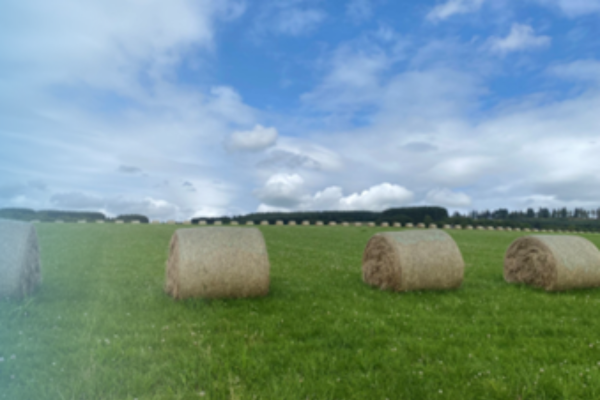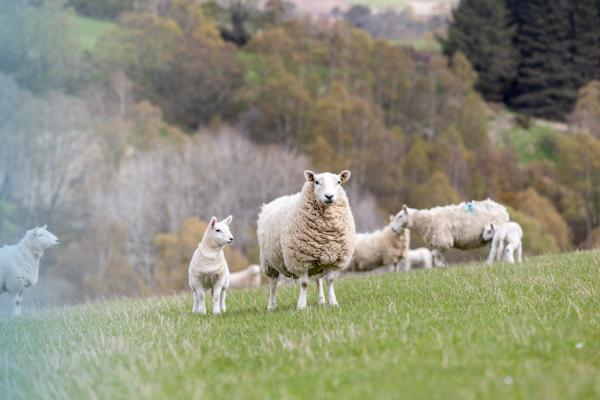Mineral Requirements in Housed Cattle
3 December 2024Key Messages
- Consider doing a mineral audit to determine if you are meeting the recommended mineral intakes for your cattle.
- Consider the response of the animal, is it performing as expected?
- Do not over-supply into the range where you may negatively affect performance or have considerable environmental excretion.
Getting minerals correct in your housed cattle is key to maintaining performance and having healthy animals.

Minerals are vital for the cow to function as they are important in several processes within the body which support health and performance. Minerals are required at every stage of life, whether it is growth during youngstock, fertility in heifers and cows, milk production or growth of a foetus during pregnancy. It is important to get the optimum mineral status correct for the cow to be as productive and healthy as possible.
As with all livestock, getting the balance right for minerals is vital to ensure there isn’t an undersupply, deficiency, or an oversupply, toxicity. Typically, there are higher incidents of undersupply of minerals seen in beef cattle, whilst in dairy cattle there are higher incidents of oversupply of minerals.
Why cattle in housed systems?
There are different challenges between housed systems and out-wintering systems, and here we focus on housed systems. Theoretically, in a housed system there should be a greater control of diet due to it being ration formulated for the animal depending on her stage in production or growth. There is therefore a better understanding of what exactly the cow is intaking per day. In dairy units, if cows can be split depending on stage of lactation, this will allow for a precise ration and so mineral requirements being met.
When the cows are receiving the same diet every day, if that diet hasn’t been formulated correctly or if the mineral balance is out then there can be a cumulative effect. Moving between cuts of silage can be challenging, it is important to analyse the different cuts and re-formulate the ration to ensure it is meeting the requirements of the cow. A key advantage of a housed system is that any supplementation method can be utilised to meet the mineral requirements of the cow. However, in some cases, this can lead to an oversupply of minerals due to a variety of supplementation methods being used. A key question is: is the ration formulated, the ration fed, and the ration consumed?
Mineral audits
A mineral audit is a good starting place to determine whether the ration is providing the minerals required by the cow. It analyses any mineral input into the diet, including forage, concentrates, water and any other supplements. A mineral audit can be broken down into the different stock classes on farm, for example, milking cows, dry cows or youngstock, which is important to do as each stock class requires different levels of minerals depending on growth rate or stage of production.
Part of the mineral audit will look at the antagonists in the diet, which is when minerals are required but can antagonise the absorption of other minerals by the cow. This can inform the input mineral type. Finally, a mineral audit will look at the source of mineral either in terms of supplement or from forage analysis. A mineral forage analysis can tell you whether there are any issues with uptake from the forage. Issues on farm may be identified through animal performance or diagnostic tests which can then lead into a mineral audit of the feed intake of the cattle.

Getting the balance right
The oversupply or undersupply of minerals can influence animal performance and therefore, profit. In dairy herds, we tend to see an oversupply whereas in beef cattle we tend to see an undersupply.
Three reasons why oversupply is an issue:
- Expensive – mineral supplementation is costly, particularly if the supply is more than what the cow requires.
- Animal performance – potential risk of toxicity with certain minerals if they exceed requirements.
- Excretion into the environment – if oversupplied, certain minerals can be excreted through the faeces and therefore excess excretion into the environment.
Dairy cattle
Within dairy herds, oversupply of minerals is more common than undersupply, in particular:
- Copper – ingested from the feed, which goes into the bloodstream to be taken to the liver to be stored. Generally, the cow will not excrete a large amount in her urine or faeces, therefore she is building the copper status and store in her liver when oversupplied.
- Iodine – generally it is fed above the recommended intake and milk is the major excretory pathway which directly impacts iodine concentration in milk.
Beef cattle
For beef cattle, there are some key considerations when it comes to mineral supplementation including the following:
- Finishing cattle – large daily liveweight gains, are the minerals meeting requirements for rapid growth whilst maintaining healthy animals?
- Data – more accurate information about growth rates and what minerals are being supplied at different stages of production.
- Mineral audit – carry out an audit of all minerals that are being ingested by the cattle to determine whether requirements are being met.
Dr Cara Campbell, SAC Consulting
Watch our recording on our webinar, Mineral Requirements for Cattle in Housing Systems here:
Sign up to the FAS newsletter
Receive updates on news, events and publications from Scotland’s Farm Advisory Service















